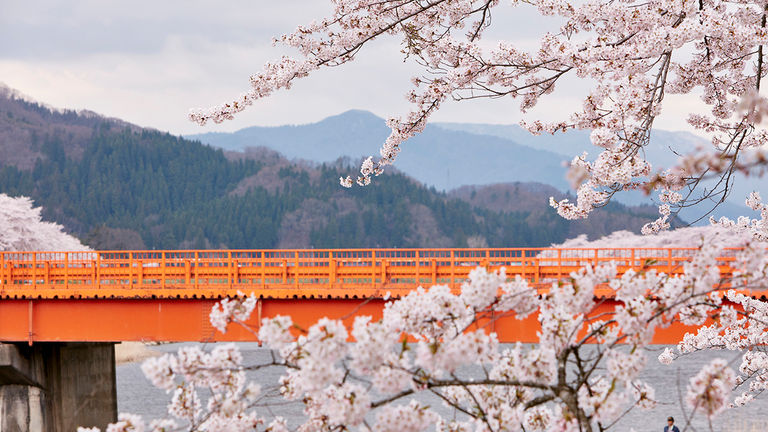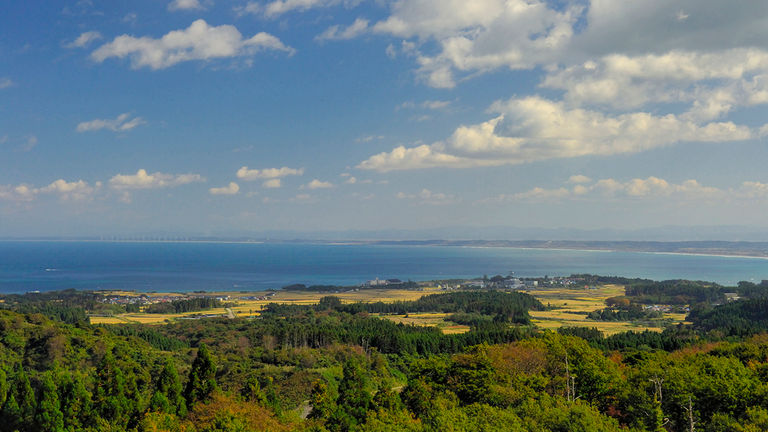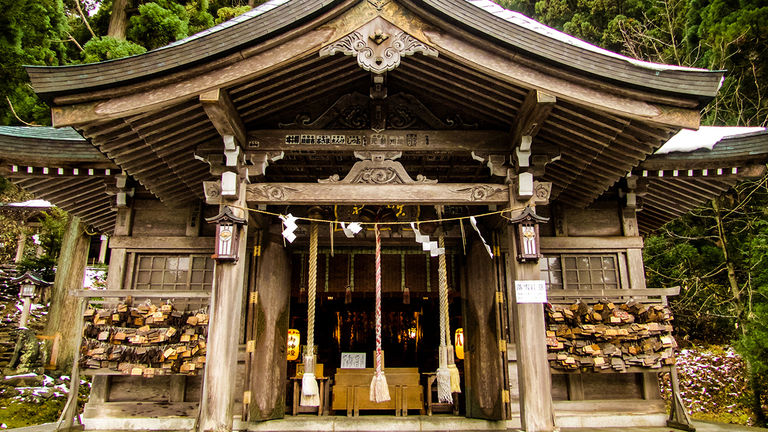Tohoku, like all of Japan, challenges visitors with unfamiliar rules and customs, making pre-trip planning — with research, reading and detailed info from tourism offices — essential.
However, that preparation is well worth the effort. From compelling rural landscapes and places of deep spirituality to an abundance of foods and art unique to the province, Tohoku offers a rich experience for visitors.
Here’s how to make the most of a visit to the region.
Sendai
Sendai, Tohoku’s provincial capital, is an easy entry into the region, thanks to a swift 90-minute ride via bullet train from Tokyo (look for a fleeting glimpse of Mount Fuji on the way). Much of the rest of the province is accessible via East Japan Railway Company (JR East), though buses or rental cars are necessary for some destinations. Conveniently, JR East also owns a collection of hotels located at or near rail stations, allowing train tickets and accommodations to be booked together.
/TohokuGuide_PHOTO1Loomis.jpg?tr=w-768%2Ch-432%2Cfo-auto) Sendai, the region’s capital, is easily accessible from Tokyo.
Sendai, the region’s capital, is easily accessible from Tokyo.
Credit: 2020 Getty ImagesSendai has little to enchant tourists, but there are wineries, and in a bucolic glen 40 minutes from downtown, Nikka Distillery also lures whisky lovers with tours and tastings. (Because Nikka’s founder studied distilling in Scotland, it’s whisky without the “e,” as it is in Scotland.)
Kakunodate
Visitors should make time for a stop in Kakunodate, where I found it was easy to imagine this city’s infamous former residents: samurai, who once lived on a broad avenue in gated wood houses under weeping cherry trees.
Indeed, on a winter evening, the road empty of tourists while snow drifted across the foggy glow of lamplights, I could conjure an image from three centuries past, when samurai warriors walked this same street.
 Kakunodate Samurai District features six preserved samurai homes and an abundance of cherry trees.
Kakunodate Samurai District features six preserved samurai homes and an abundance of cherry trees.
Credit: 2020 Japan National Tourism OrganizationToday in Kakunodate’s Bukeyashiki-dori district, six preserved Samurai homes are open to the public; interspersed among them are galleries selling artwork, handicrafts and — following that curious obsession of the Japanese — cats in every possible form.
Felines aside, Kakunodate, within Japan’s Akita Prefecture, is known for its singular cherry-bark artwork, kabazaiku. It’s sold everywhere and celebrated at the city’s Cherry Bark Work Museum, where educational workshops can be arranged for visitors. (Having an interpreter is a must, as English is very limited.)
Oga Peninsula
Heading west in the Akita Prefecture, the road to Oga skirts the Sea of Japan, where coastal living is traditionally harsh, requiring hard work.
 The Oga Peninsula
The Oga Peninsula
Credit: 2020 Getty ImagesLocal culture is dominated by mythical Namahage, ogre-like creatures said to journey down from the mountains each New Year’s Eve to reprimand slackers. These creatures are brought to life by performers in ragged straw costumes and fearsome masks at Oga Shinzan Folklore Museum (parents should note that performances may be scary for young children). Exhibits at the nearby Namahage Museum explore the legendary tales, but for me it’s the collection of vivid masks that steal the show.
Tohoku is filled with shrines (Hindu) and temples (Buddhist), which have coexisted in Japan for centuries. Oga’s evocative Shinzan Shrine, secluded in a serene cedar forest, is one to visit. Stone steps from the impressive main gate lead to, among other things, a 1,000-year-old kaya tree that is said to bestow good fortune on visitors.
 Shinzan Shrine is located in a cedar forest.
Shinzan Shrine is located in a cedar forest.
Credit: 2020 Christine LoomisTsuruoka
South of Oga in Yamagata Prefecture, the city of Tsuruoka is home to three sacred mountains. Monks dedicated to preserving nature guide visitors at Mount Haguro, where a rustic trail leads down into a glen, over a bridge and through a forest to the ancient five-story pagoda.
Tsuruoka’s highly regarded Kamo Aquarium, brought back from the brink of closure by a dazzling jellyfish exhibit, is another visitor highlight. But the city’s designation as a UNESCO Creative City of Gastronomy — due to collaborations between local farmers and chefs — shouldn’t be overlooked. Farinamore, an Italian cafe and shop, transforms local noodle dishes into international fare, providing clients with a nice break from fish broth and seaweed.
Nagano
There’s more to explore on Tohoku’s western coast, but a perfect add-on is Nagano, the site of the 1998 winter Olympics and the only place to see Japanese macaques lazing around hot springs. The residents of Jigokudani Snow Monkey Park are wild. They come and go as they please. But posing in the steamy mist — grooming, swimming and occasionally bickering — seems high on their daily agenda. Appearing alternately implacable or blissed out in their monkey spa, they mostly ignore the throngs of humans jockeying for the perfect photo.
Nagano is also known for handmade soba noodles and Zenko-ji, its magnificent seventh-century temple complex, just 10 minutes from the JR Nagano station. Clients are advised to hire an English-speaking guide to avoid inadvertent missteps including where, exactly, shoeless feet can touch the temple floor — or where visitors can stand.
Zenko-ji is the resting place of the enigmatic secret Buddha, unseen by anyone for 1,000 years. Visitors can join prayer sessions and descend into a lightless passageway to touch a “key” (more like a doorknob), meant to guarantee entry to paradise. “If you drop something, it’s gone,” the guide warned. She wasn’t kidding. It’s disorienting blackness, but my hand found the key. Now, I’ll just wait for paradise.
The Details
Tohoku Tourism
www.tohokukanko.jp